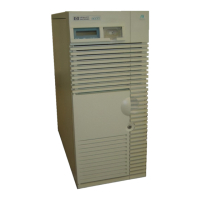FINAL TRIM SIZE : 7.0 in x 8.5 in
4
Note that, if
local le
is not in your current directory,you will need to supply
the relative path (to get from y
our current directory) or the absolute path
(from
/
), in addition to the lo cal le name. Y
ou will need to sp ecify the
complete (absolute) path for the
remote
lename
on
remote hostname
only if
you wantit to go in
to a directory other than the remote home directory
.
For example, to copy
myfile
from your current directory to a remote system
called
xyz
:
rcp myfile xyz:/users/leslie/otherdir
In this case,
myfile
will be copied as
myfile
into the remote subdirectory
,
otherdir
.Ifyou had only supplied the remote host name,
rcp
would have
copied
myfile
into the remote home directory, also as
myfile
.
You can also include a lename in the destination. F
or example, to copytoa
system named
xyz
:
rcp myfile xyz:/users/leslie/otherfile
In this case, you have copied
myfile
as
otherfile
, in the remote directory
leslie
.
Copying a File on a Remote Host to Y
our Local Directory
Now, to reverse the pro cess, here is howyou would copy a le
from
a remote
host into your lo cal directory. Use the following syntax:
rcp
remote hostname
:
remote lename local lename
For example, to copy
myfile
from your account in a remote system
xyz
into
your current directory:
rcp xyz:/users/leslie/myfile .
The dot (
.
) is shorthand for \current directory". In this case,
myfile
will be
copied as
myfile
from the remote directory into your current directory.You
do not have to supply the destination lename if you don't want to copyittoa
new name.
If you want to copy
myfile
into another directory in your home system, use a
path name, absolute or relative, as shown:
rcp xyz:/users/leslie/myfile otherdir/
DRAFT
2/5/97 11:31
Using the Command Line 4-25

